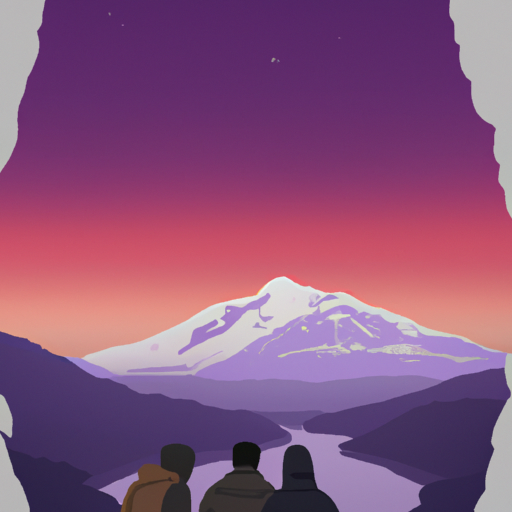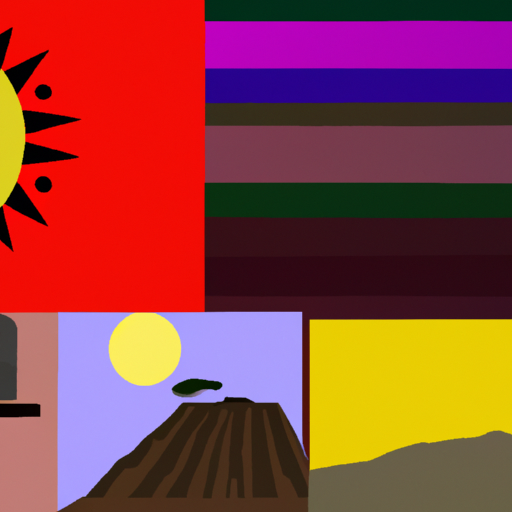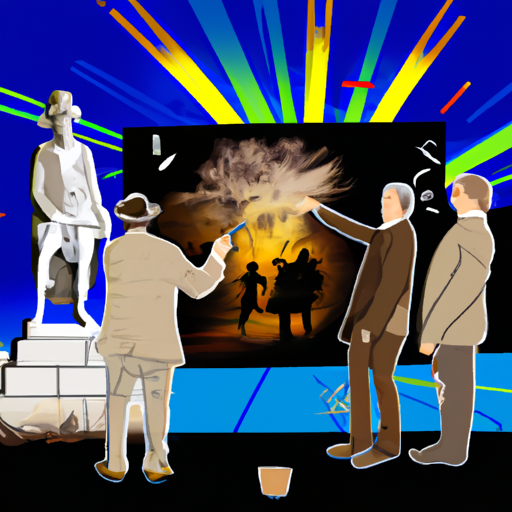A Brief History of the First Asians
Unearth the secrets of antiquity! Delve into the past and discover the story of the earliest Asians, and what their influence has been throughout time. Uncover their enduring legacy and uncover a whole new world!

Venture into the captivating realm of East Asian history and explore its many secrets. Trace the roots of this civilization back to its earliest cultures, such as Jomon Japan, Neolithic China, and Bronze Age Korea. Unearth how these cultures have shaped their respective countries’ histories and what they have contributed to our understanding of the region today. Investigate the cultural exchange between East Asia and other parts of the world throughout history, from trade routes to technological advances.
Examine how East Asian culture has changed over time in response to different events and influences, from wars and revolutions to foreign invasions. Observe how traditional values have been preserved despite outside pressures, as well as how new ideas have been embraced by local populations. Delve into key figures in East Asian history who have helped shape our understanding of this region, from Confucius and Lao Tzu in China to Hideyoshi Toyotomi in Japan.
Gain insight into what makes East Asians unique by exploring their customs, beliefs, art forms, religions, languages, cuisines, music styles and more. Understand how these elements have evolved over time due to various external influences while still preserving traditional practices. Uncover the real story behind East Asia’s past and present – one which is filled with mystique and curiosity!
.
Introduction

It is conjectured that the first of the Asian races were the progenitors of today’s humanity, who migrated from Africa and traversed Asia more than 50,000 years ago. Archaeological evidence of human presence in East Asia has been traced back to 40,000 years ago. Subsequently, these early settlers spread out across the continent and populated a majority of it by 10,000 BCE. By then, many diverse cultures had emerged with their own languages and customs. Nowadays, Asia is inhabited by a plethora of ethnicities which have their roots in those ancient populations.
– History of the First Asian Civilizations
Mystifying and perplexing, the history of the first Asian civilizations is one of the most captivating tales in human history. Spanning thousands of years, these ancient societies have left an indelible mark on our modern world. From the earliest known evidence of civilization in Mesopotamia to the great empires of China, India, and Japan, this story has been one of both awe and enigma.
The earliest proof of civilization in Asia can be traced back to around 5500 BCE in Mesopotamia, now located in Iraq. This region was home to some of the very first cities and writing systems. Later on, many other civilizations developed across Asia during this period such as those in India and China.
In India, early civilizations like the Harappan culture flourished from around 3000 BCE until 1700 BCE. The Harappans were renowned for their vigorous trade networks and intricate urban planning. They also had a highly advanced system for storing water for irrigation purposes.
China’s initial dynasties began to emerge around 1750 BCE with the Xia dynasty. This was succeeded by the Shang dynasty (1600-1046 BCE) which is best remembered for its bronze workmanship and use of oracle bones for divination purposes. During this time period, Confucianism began to take shape as a philosophical system that would become a crucial part of Chinese culture for centuries to come.
Japan’s oldest recorded history dates back to around 300 CE with the introduction of Buddhism from China and Korea. This was followed by centuries of political instability until 1185 when Minamoto Yoritomo established a new government based on feudalism that lasted until 1868 when Emperor Meiji assumed power and ushered in a new era known as the Meiji Restoration.
These early civilizations have imparted numerous cultural innovations that are still practiced today such as Buddhism, Confucianism, martial arts, literature, art forms like calligraphy and painting, music instruments like koto and shamisen, culinary traditions like sushi and ramen noodles—the list goes on! It is impossible to overestimate how much influence these early Asian civilizations have had on our current society; they truly laid down an unshakeable foundation upon which we stand today.
– Early Asian Migration Patterns Throughout History
Throughout the ages, a range of elements have had an impact on Asian migration. Initially, these migrations were propelled by economic prospects or compelled displacement because of war. For instance, during the 1800s, Chinese workers traveled to America in search of gold and other opportunities that came with the Gold Rush. Additionally, many Asians were sent to Southeast Asia and Australia as indentured laborers or convicts.
The 1900s saw a rise in Asian migration as governments began to restrict immigration from certain countries. This was especially true for Japanese immigrants who were barred from entering the United States due to anti-Japanese sentiment after World War II. Moreover, many South Asians moved to Britain during this period in search of better economic possibilities.
More recently, globalization has resulted in an increase in Asian migration patterns. A multitude of people from East Asia have relocated to Western countries such as the United States and Canada for higher education or employment opportunities. Furthermore, numerous Filipinos have sought jobs abroad due to high unemployment rates at home. In addition, increasing numbers of people from South Asia have migrated to Europe and North America for similar reasons.
In conclusion, various factors including economic opportunity, political limitation, and social upheaval have formed Asian migration over time. As globalization continues to shape our world today, it is likely that we will see even more changes in these patterns going forward.
– Impact of Early Asian Settlers on World History
For millennia, the influence of settlers from East and Southeast Asia on the course of world history has been immense. From the 4th century BC to the present day, their presence has been felt in almost every aspect of global culture. The Silk Road was just one example of how these pioneers opened up new economic possibilities between Europe and China, while also introducing a wealth of goods and ideas that would shape societies for centuries to come.
Religion and philosophy were also profoundly affected by early Asian settlers. Buddhism, Taoism, and Confucianism all emerged from this region and spread throughout the world, providing moral codes which guided many cultures. Art and architecture were likewise impacted; the Great Wall of China stands as a testament to this legacy, while Chinese porcelain and Japanese calligraphy have become iconic symbols of luxury over time.
In more recent times, science and technology have been profoundly shaped by Asian settlers as well. Gunpowder, printing presses, robotics and AI are just some examples of innovations which can be traced back to East Asia; indeed many countries in this region have seen remarkable economic growth due to their embrace of such advances.
It is therefore clear that early Asian settlers have left an indelible mark on world history – one which continues to be felt today in countless ways.
– Historical Accounts of Ancient Asian Empires
The perplexing and bursting history of Ancient Asian Empires has been an enthralling topic for historians for ages. From the earliest records, these empires have left a permanent mark on the planet. The first known empire in Asia was the Akkadian Empire, reigning from 2300 to 2200 BC in what is now Iraq and Syria. It was then followed by the Assyrian Empire, which lasted from 900 to 600 BC, covering much of modern-day Iraq, Syria, Iran, Turkey, and parts of Egypt. Later empires were the Persian Empire (550-330 BC), stretching across most of western Asia; the Mauryan Empire (321-185 BC), ruling over India; and the Han Dynasty (206 BC – 220 AD) in China.
Each of these empires had its own unique culture and customs that formed their societies. For instance, the Akkadians created a written language called cuneiform that enabled them to record information about their government and laws. The Assyrians constructed huge monuments such as ziggurats and palaces that still stand today. The Persians developed an efficient system of roads and canals that allowed goods to be transported quickly throughout their empire. The Mauryans developed a large bureaucracy to manage their expansive holdings while the Han Dynasty established a civil service system that would later become the model for other governments in East Asia.
These ancient Asian empires also left behind many accounts of their histories through written records like royal decrees, chronicles, annals, biographies, edicts, poems, inscriptions, coins, sculptures, paintings etcetera. These documents provide invaluable insight into how these societies operated as well as how they interacted with one another both politically and culturally. By studying these historical accounts we can gain a better understanding of how these ancient civilizations evolved over time and contributed significantly to our contemporary world today.
– Exploring the Rich Cultural Heritage of Asia’s First Peoples
A journey through the eons of Asia’s first inhabitants is a captivating one, filled with multifaceted stories. From the ancient civilizations of China, India, and Japan to the nomadic tribes of Mongolia, Central Asia, and Siberia, the region has been home to a plethora of cultures throughout time. Delving into this past can allow us to gain an understanding of these early societies’ ways of life and convictions.
In China, archaeological findings point to a civilization dating back over 4500 years ago. This era marked the emergence of agriculture, writing systems, intricate legal codes and early forms of government. The Chinese were also renowned for their refined art forms such as pottery and jade carving – remnants that are still visible in present-day Chinese culture through language, cuisine, architecture and art.
India too holds clues to its ancient past. The Indus Valley civilization flourished around 2500 BCE and was one of the oldest urban societies in South Asia. It is thought to have possessed an advanced writing system which remains undeciphered today. Artifacts from this period also illustrate a high level of skill in metalworking and stone masonry as well as a complex trading network between distant cities – traces that still linger in Indian culture today in areas such as religion, artistry and music.
Further east in Japan lies evidence for an even more ancient civilization dating back over 10 000 years ago during the Jomon period when people lived in small villages or hamlets along coastal regions. During this time they developed distinct pottery styles which are still seen today in Japanese ceramics. They also practiced religious rites involving animal sacrifice which later evolved into Shintoism – an animistic faith still practiced by many Japanese people today.
Exploring Asia’s first peoples’ cultural heritage can offer us an engrossing insight into their lives and beliefs from long ago until now. By learning how these cultures have changed over time we can gain a greater appreciation for our shared history and recognize how diverse our world really is!
conclusion

Perplexed theories abounded as to the genesis of the first Asians, with some believing their roots could be traced back to the Middle East and Central Asia. Uncovering evidence of human habitation in the area as far back as 40,000 years ago, it is thought that one of the earliest known civilizations was that of the Sumerians in what is current-day Iraq circa 4500 BCE. This was swiftly followed by the Akkadian Empire, which had a large influence over much of modern-day Iraq and Syria. Other ancient cultures such as the Babylonians and Assyrians also left an indelible mark on Asian culture and society.
.
Some questions with answers
Q1. Who are the first Asians?
A1. The first Asians were Homo erectus who lived in East and Southeast Asia about 1.8 million years ago.
Q2. How did the first Asians live?
A2. The first Asians, Homo erectus, hunted and gathered food for subsistence living.
Q3. What is the history of Asian migration?
A3. Over time, many different groups of people migrated to Asia from other parts of the world, such as the Middle East and Europe.
Q4. When did agriculture begin in Asia?
A4. Agriculture began in Asia around 10,000 BCE with the domestication of plants and animals.
Q5. What is the oldest civilization in Asia?
A5. The oldest civilization in Asia is believed to be the Indus Valley Civilization which flourished between 3300-1300 BCE in what is now Pakistan and western India.




